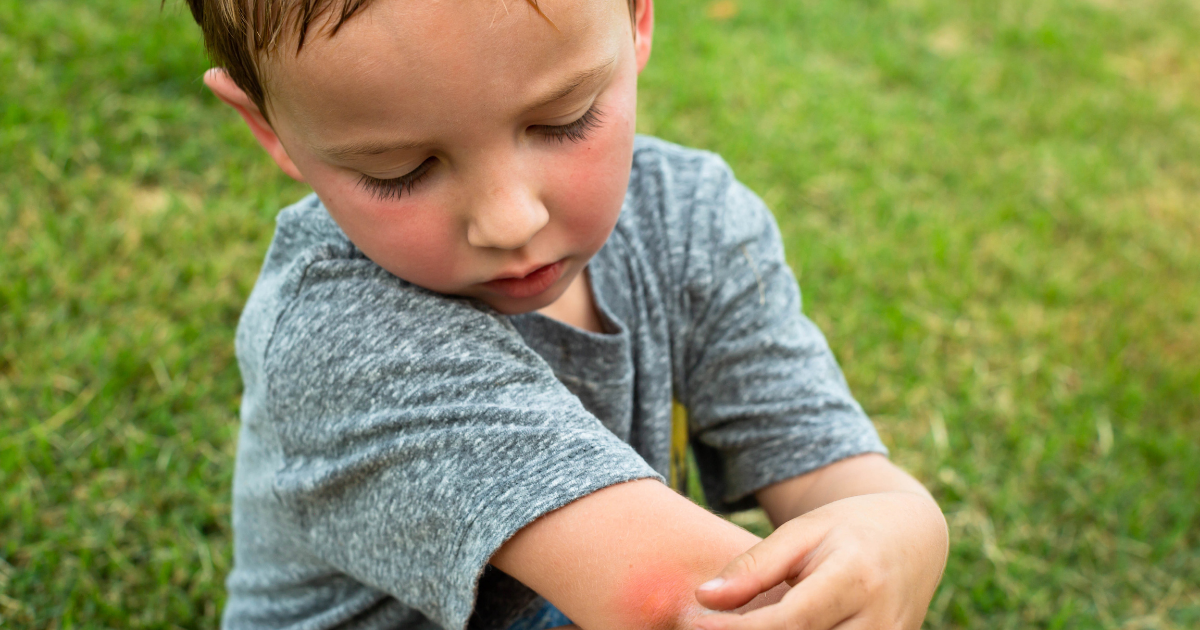You’re bound to encounter all sorts of bugs this summer, but you may not even realize they’re around until long after they’re gone. It can take hours before you see or feel the itchiness from their bite.
So where did that bite come from? And more importantly, how should you treat it? While there are some common treatments, the best one will depend on the type of bite. Here’s a look at how to identify the culprit, the best way to treat a bug bite, and how to avoid them in the first place.
Mosquitoes
Typically, symptoms will appear a few minutes after the bite itself: one or more red, puffy bumps that become itchy right away. They may start off small, but can get redder and puffier with scratching. Children and people with immune system disorders may have more severe reactions, such as hives, low fever, or larger areas of redness or swelling.
What to do:
To stop the itchiness, reach for the Calamine lotion or an anti-itch topical cream. If those aren’t handy try toothpaste, as a home remedy. One dab has enough menthol to reduce irritated skin.
Spider Bite
A spider bite typically causes a small red bump that looks a lot like a mosquito bite. How can you tell the difference between a mosquito bite and a spider bite? Pay attention to your body’s reaction. While a mosquito bite causes itching, a spider bite can cause pain.
What to do:
You can use ice to reduce the swelling and apply an over-the-counter antihistamine cream to treat any pain. Lavender oil, witch hazel, or camphor oil can also help.
Ticks
Tick bites are painless. That’s not counting the anxiety of stumbling upon the tick, of course. Most people realize they’ve been bitten the moment they discover a tiny body – head-down, arms out – in their hair, armpits, or behind the knees. Yuck.
What to do:
Aside from minor swelling and soreness near the bite, a tick bite won’t cause noticeable symptoms – not at first. Remove the tick with tweezers, grasping it close to the skin and pulling it slowly and steadily. (More tips about tick bite treatment are available from the Mayo Clinic.) You may have a small rash around the bite, and that’s typical. Monitor the bite closely. Contact your doctor if you develop flu-like symptoms or the rash gets bigger.
Want to avoid ticks in your yard? Mosquito Shield offers an effective tick control and prevention treatment that keeps them away.
Chiggers
Gardeners, you aren’t the only ones out there this summer. Chiggers – which are actually the larvae of mites – live in dense, shady places, such as overgrown areas of grass, shrubs, or leaf litter. They are small enough to avoid casual detection and are attracted to areas on your body where clothing fits closely. Their bites cause red welts, are extremely itchy, and can last up to a week.
What to do:
Try calamine lotion to relieve those itchy bites, or try some standard go-tos such as ice or antihistamines.
Bees
Stings typically appear as small red welts, with slight or moderate swelling near the sting. The pain of a bee sting is strong and instantaneous. However, most reactions end there, and symptoms go away in just a few hours.
What to do:
Inspect the area to make sure there’s no stinger left behind. If you’re clear, a dab of medical-grade honey, such as Manuka honey, can help the sting heal naturally. Just apply and lightly cover. Other options include a baking soda paste, apple cider vinegar, and meat tenderizer. If none of those are available, ice can help soothe the sting.
The Right Way to Treat Bites
- Refrain from scratching your bites. It goes without saying, but scratched bites can become infected. Scratching can also make the itching worse and extend the duration.
- Here’s how to relieve itching and swelling safely:
- Wash the area with soap and water
- Apply ice for 10 minutes
- Mix 1 tablespoon of baking soda with enough water to create a paste. Apply and keep the paste on your bite for 10 minutes, then rinse.
- Apply an over-the-counter anti-itch cream
- Take an antihistamine, such as benadryl
The good news is most bug bites are harmless, more annoying than dangerous, and quick to heal, provided you treat them correctly.
Precautions to take to Prevent Bug Bites
- Use insect repellent, making sure to spray head to toe when heading out to the woods, parks, or other public places where the pests congregate.
- Remove potential mosquito nesting grounds such as areas around your house where water collects.
- After being outdoors, shower with soap and put on clean clothes right away. This is a good step against all kinds of pests, such as ticks. Chiggers, for example, are easy to brush loose and will not survive a hot cycle in your clothes washer.
- Get a professional to treat your property. Mosquito Shield can apply an effective mosquito control barrier treatment to your deck or patio area, deflecting mosquitos and ticks before they reach you. Mosquito Shield’s service can help you take back your space and prevent future infestation, so you can enjoy everything you love about being outdoors with true peace of mind.


